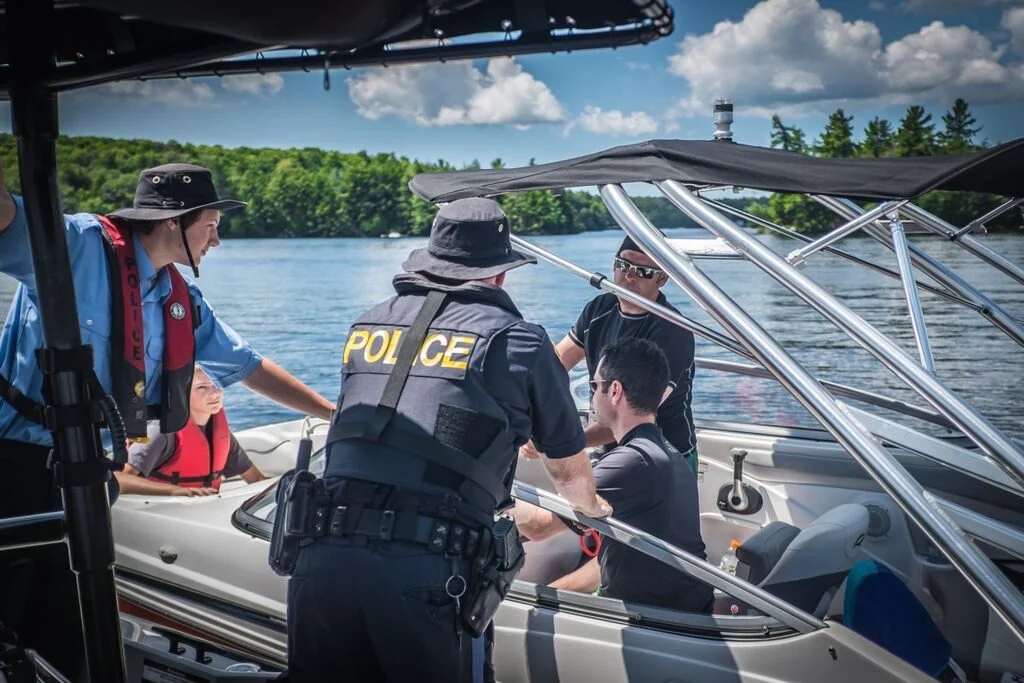Infant Life Jacket: Essential Safety Tips and Top Picks
Introducing your little one to the joys of swimming and other water activities requires making sure they are safe and secure at all times. Infant life jackets play a crucial role in ensuring the safety of your child while around large bodies of water, such as swimming pools, ponds, rivers, lakes, and oceans. These specially designed life vests come in various sizes, types, and safety features tailored for children under 30 pounds.
Understanding the different types of infant life jackets and their key safety features is essential for parents and caregivers who want to provide an extra layer of protection for their child. It is important to choose a life jacket that is properly fitted and comfortable for your little one to wear, as well as compliant with relevant regulations. Additionally, always remember that adult supervision is an indispensable aspect of ensuring your child's safety around water, and no life jacket can replace a watchful eye.
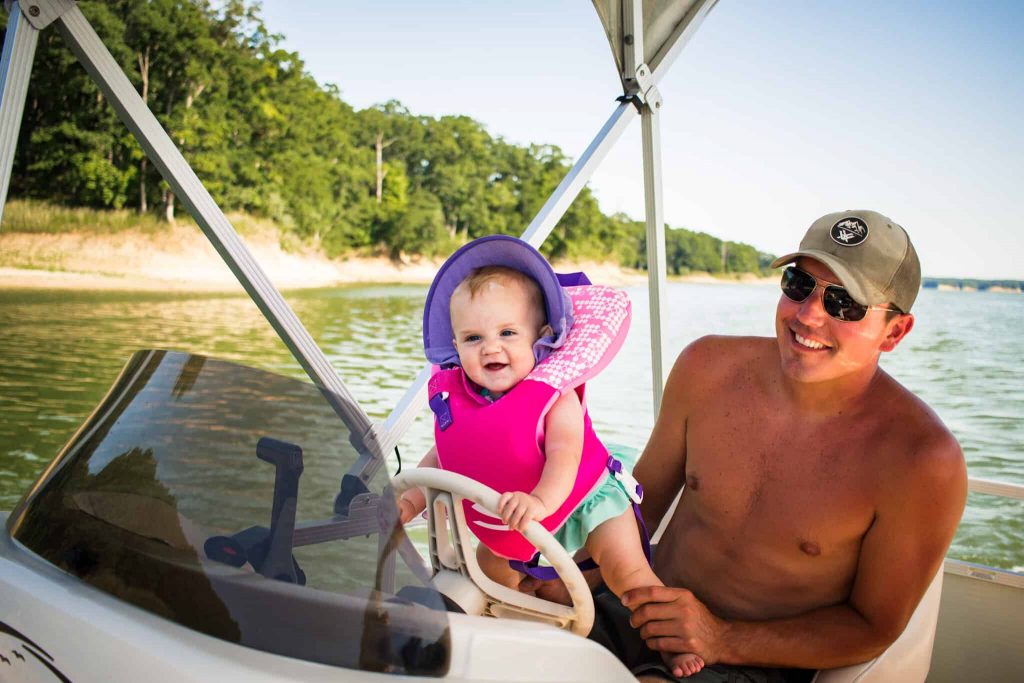
Key Takeaways
- Infant life jackets are crucial for ensuring water safety for young children under 30 pounds.
- Selecting a properly fitted life jacket with key safety features is essential for your child's security and comfort.
- Adult supervision remains indispensable even when using infant life jackets for water activities.
Understanding Infant Life Jacket
An infant life jacket is a crucial piece of safety equipment for babies when participating in water activities. These specially designed life jackets provide buoyancy and support to keep infants safe and comfortable in the water. When selecting the right infant life jacket, there are several factors to consider.
First, ensure the infant life jacket is appropriately sized for your baby. Life jackets for infants are categorized by weight, with infant PFDs designed for babies weighing 8-30 pounds. It is vital to choose a life jacket that fits snugly and securely, without being too tight or uncomfortable.
Second, look for life jackets that have a head support or flotation collar. This feature helps keep infants' heads above water and prevents their face from being submerged. Many infant life jackets also include a grab handle, which allows for easy and quick retrieval in case of an emergency.
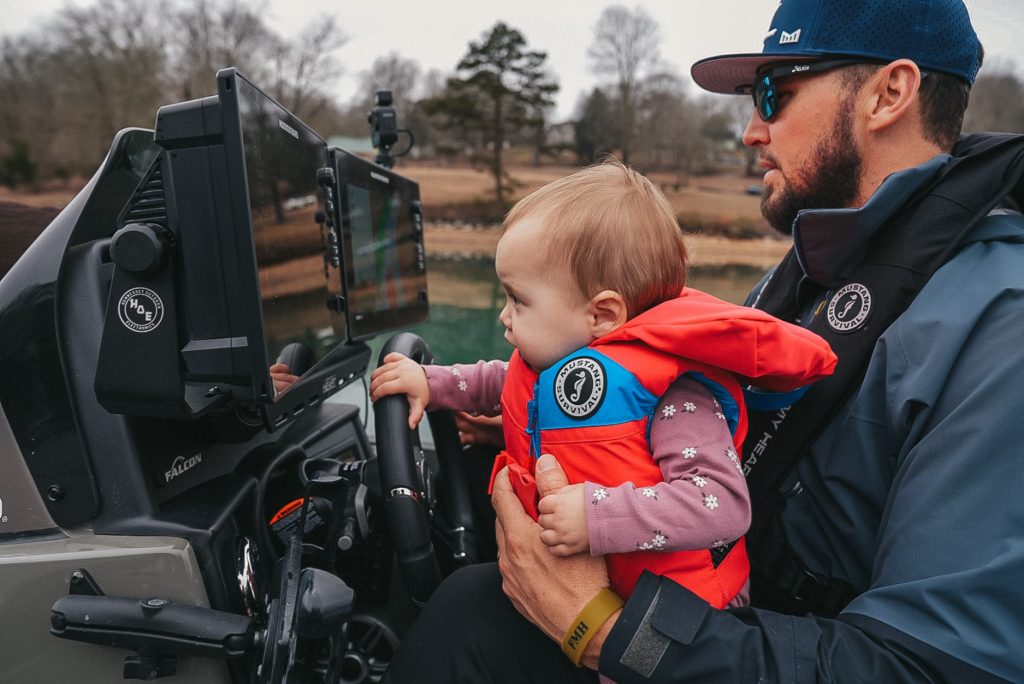
Material and construction are also significant factors. Infant life jackets should be made from high-quality, durable materials that can withstand the wear and tear of water activities. Additionally, a well-constructed life jacket will have secure straps and buckles to ensure it stays in place.
Lastly, comfort and ease of use are essential aspects to consider. A comfortable infant life jacket will not restrict your baby's movement and will be easy to put on and take off. You may want to look for life jackets with adjustable straps, as they can provide a more customized fit for your baby.
In summary, selecting the right infant life jacket is essential for ensuring your baby's safety during water activities. Keep in mind the sizing, features, materials, and comfort when choosing the most suitable life jacket for your little one. By being knowledgeable and confident in your choice, you can help protect your baby and create a safe and enjoyable experience for all.
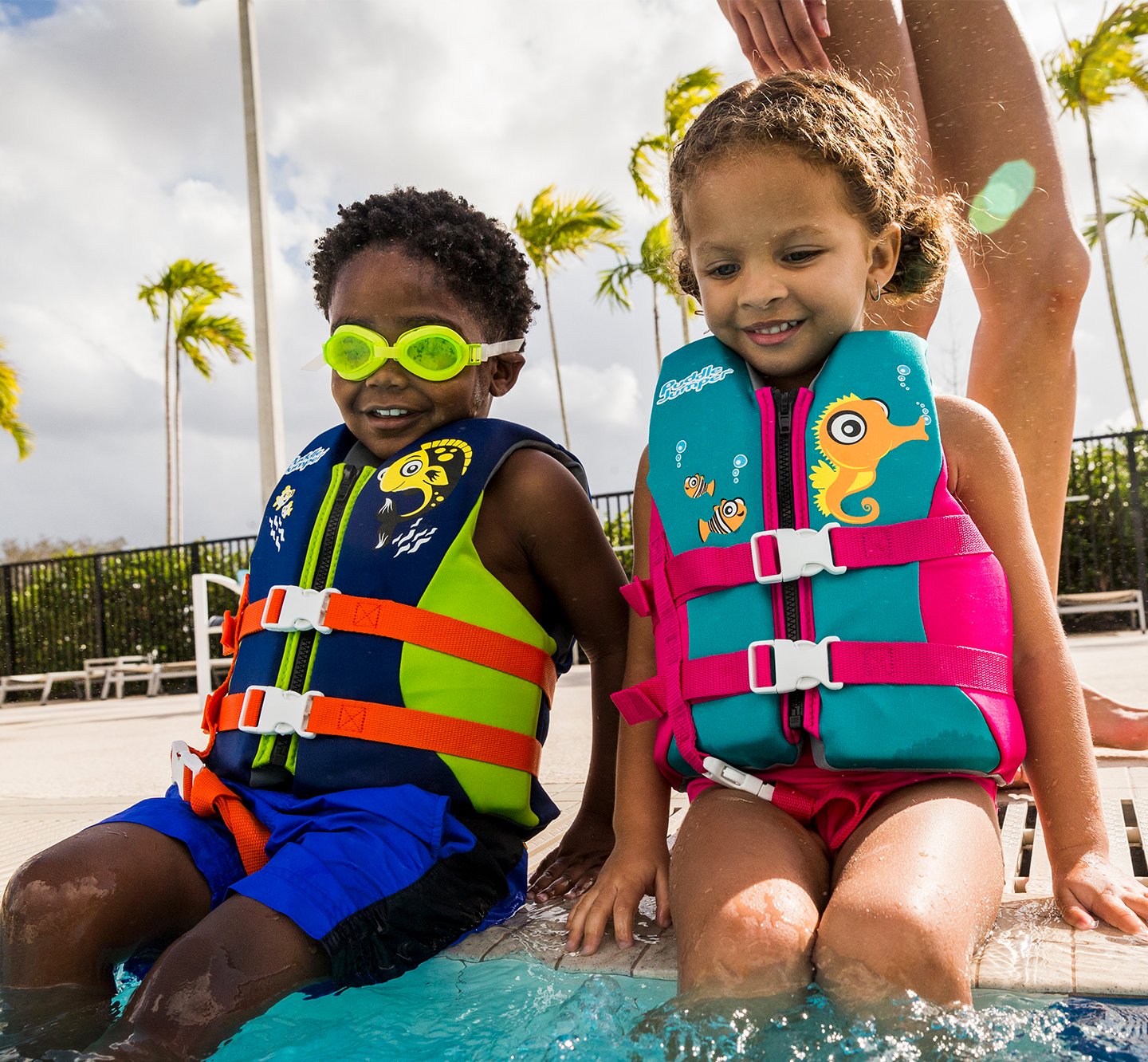
Types of Infant Life Jackets
USCG-Approved Jackets
When it comes to infant life jackets, it is important to choose a US Coast Guard (USCG)-approved jacket. These jackets are divided into five types: Type I, Type II, Type III, Type IV, and Type V. Each type is designed for specific water conditions and activities.
- Type I: These jackets provide the highest level of buoyancy and are intended for use in rough or remote waters where rescue may take a long time.
- Type II: Commonly recommended for infants, Type II life jackets are designed for calm, inland waters where a quick rescue can be expected. The Stearns Type II Infant Life Jacket is a popular option for infants.
- Type III: These jackets are suitable for supervised activities in calm, inland waters and provide a comfortable fit for extended wear.
- Type IV: These are throwable flotation devices, such as life rings, and are not suitable as infant life jackets.
- Type V: These jackets are designed for specialized activities and often require the user to have a specific skill set to use them correctly.
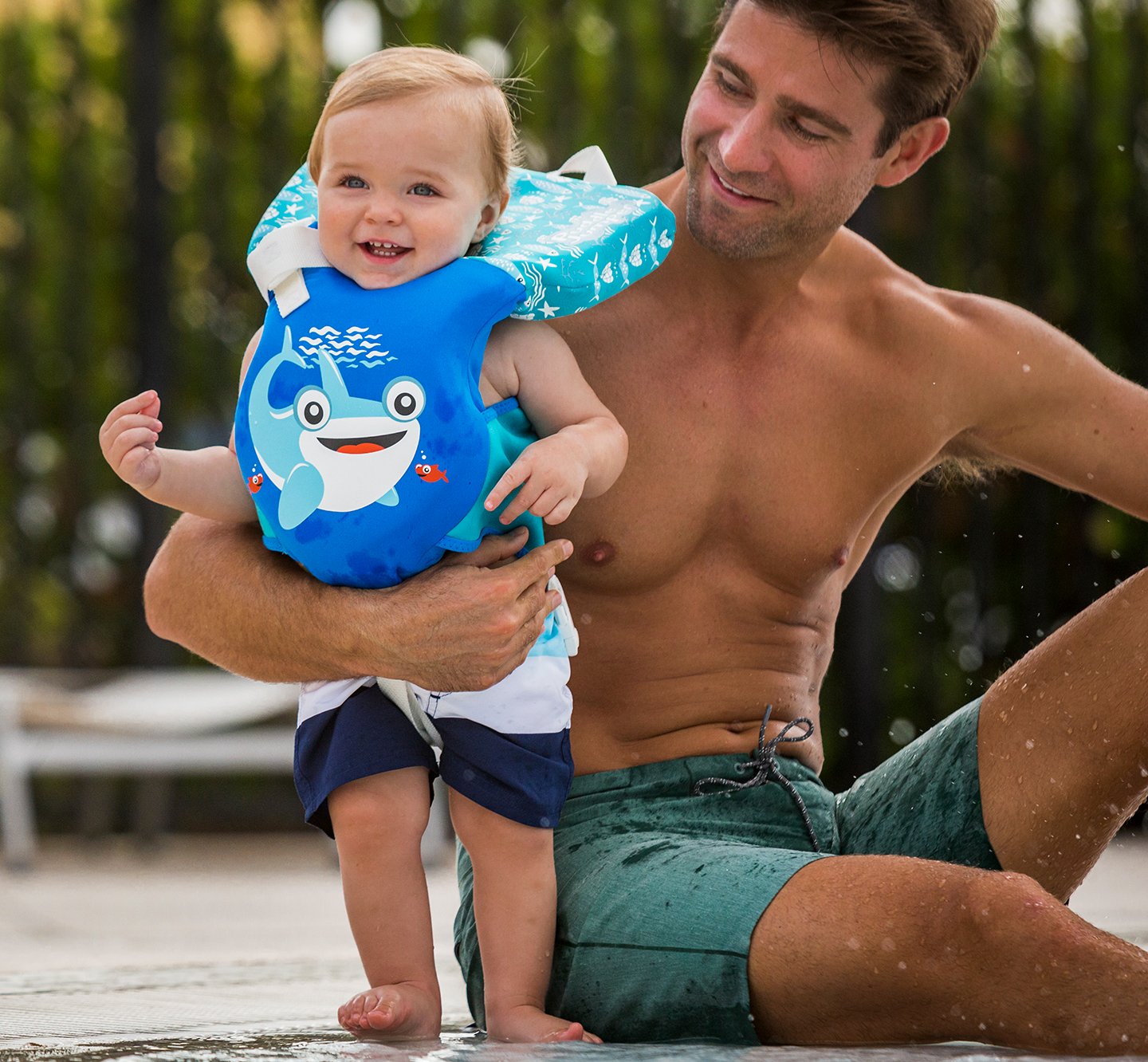
Best Infant Life Jackets
Several infant life jackets have been highly recommended by parents and industry experts. Here are some top options to consider:
- Stohlquist Unisex US Coast Guard Approved Type II PFD: This Type II life jacket offers dual neck support and a snug fit, making it a great choice for infants.
- Stearns Puddle Jumper: While not a traditional Type II jacket, the Puddle Jumper is designed to help infants learn to swim and flips the baby onto their back if they fall into the water.
- O'Neill USCG: Recommended for ocean use, the O'Neill USCG life jacket comes with straps to prevent it from slipping off and promotes face-up flotation for infants.
When selecting an infant life jacket, always consider the specific needs and water environment of the child to ensure safety and comfort.
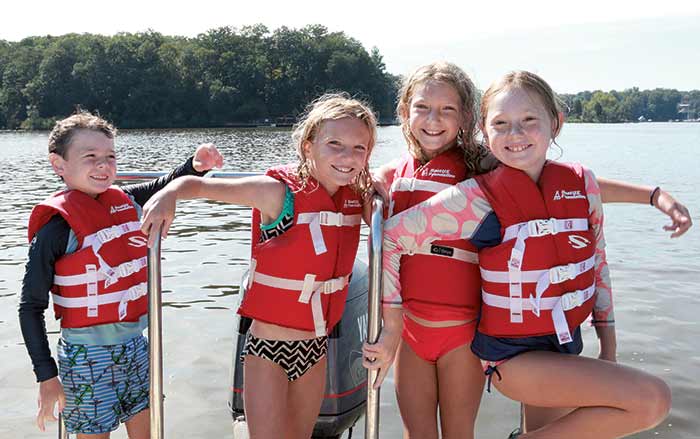
Key Safety Features
When selecting an infant life jacket, it is crucial to prioritize safety features that ensure the child's well-being and comfort. The following are some essential safety features to look for in an infant life jacket:
Grab handle: A sturdy grab handle allows for quick and easy retrieval of the child from the water. This feature is particularly important in emergency situations and can significantly improve the child's safety.
Crotch strap: A crotch strap helps secure the life jacket in place, preventing it from riding up on the child or slipping off. This feature not only enhances safety but also promotes comfort and confidence in the water.
Head support: Effective head support is essential for maintaining the child's head above water. This feature is typically achieved through buoyant material or built-in headrests that provide stability and keep the child's airway clear.
Buoyancy: The buoyancy of an infant life jacket should be sufficient to keep the child afloat comfortably. It is advised to select a life preserver with a flotation capacity specifically designed for infants and toddlers, ensuring optimal performance.
Quick-release buckles: Quick-release buckles allow for easy fastening and unfastening of the life jacket. This feature ensures convenience and speed in adjusting the fit or removing the life jacket in emergency situations.
Adjustable straps: Adjustable straps enable customization of the life jacket's fit according to the child's size and shape. Proper fitting is essential for the life jacket's effectiveness and the child's comfort, making this feature a key consideration.
By focusing on these safety features, parents and caregivers can confidently select an infant life jacket that provides both security and ease of use. Investing in a high-quality flotation device with relevant safety features is an important step in ensuring the child's safety during water activities.
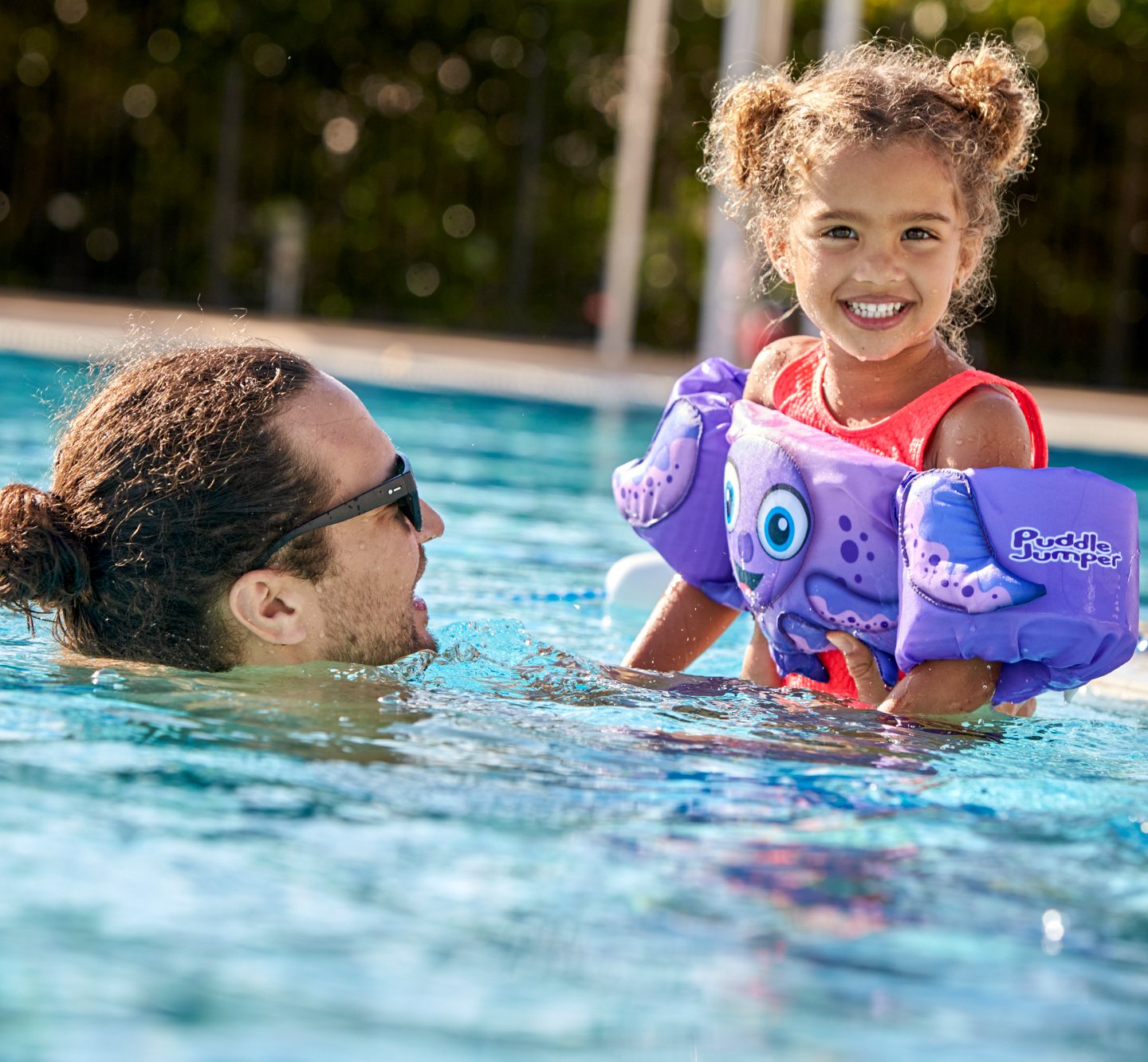
Choosing the Right Fit
When selecting an infant life jacket, it is crucial to prioritize the right fit and comfort. A well-fitting life jacket will provide proper buoyancy and ensure the child's safety while in the water. There are a few key factors to consider, including fit, comfort, weight range, and the size and weight of the infant.
The first step is to evaluate the weight range of the life jacket. Manufacturers typically provide a recommended weight range for their products. It's essential to choose a life jacket that accurately matches the infant's weight to provide adequate support and flotation. While shopping for infant life jackets, you may come across various sizing options, so make sure to pick the one that matches your child's weight.
Next, consider the comfort and fit of the life jacket. The life jacket should not be too tight, causing discomfort, or too loose, compromising safety. The proper fit is one that allows for ease of movement without excessive bulkiness. A snug and comfortable life jacket will encourage the child to wear it willingly and without resistance. Moreover, it should have adjustable straps for a more customized fit and to accommodate the child's growth.
Another vital aspect is the life jacket's size and weight. Lighter jackets may offer better comfort and mobility if designed with the appropriate materials. However, this should not compromise the overall sturdiness and support provided. Keep in mind that as your child grows, their life jacket requirements may change, and they will eventually need a new life jacket with the correct size, weight, and fit.
In summary, choosing the right fit for an infant life jacket entails considering the weight range, comfort, fit, size, and weight of the life jacket itself. By ensuring the life jacket fits correctly, parents can confidently take their infants on water-based adventures while prioritizing safety and comfort.

Water Safety Guide
When it comes to water activities such as boating, swimming, and playing in pools or oceans, ensuring the safety of infants and young children is crucial. The use of an infant life jacket is an essential part of water safety and can significantly reduce the risk of drowning.
According to the American Academy of Pediatrics and the Centers for Disease Control and Prevention, drowning is a leading cause of accidental death among young children. Therefore, implementing proper safety measures such as life jackets, adult supervision, and appropriate swimming education are all part of creating a safe environment for infants and children near any body of water, including oceans, rivers, and lakes.
When selecting an infant life jacket, ensure that it is U.S. Coast Guard-approved and matches the child’s weight. The priority should be on the fit and comfort, as an ill-fitting life jacket can be ineffective in preventing accidents. Some infant life jackets also offer additional features such as head support collars and leg straps for extra safety and a secure fit. Water Safety USA recommends choosing a life jacket with these features for infants and young children.
Adult supervision is another essential aspect of water safety. Even with a life jacket, never leave infants and children unattended near or in the water. It is vital to stay vigilant and attentive during water activities, as accidents can happen in a matter of seconds.
In addition to using life jackets and providing supervision, introducing infants and children to swimming lessons is another proactive measure for promoting water safety. The American Red Cross suggests that children learn to swim as soon as they are developmentally ready, usually around the age of four. In the meantime, parents can introduce basic water safety skills during supervised playtime in shallow water.
With these practices in place, infants and children can safely participate in water activities and develop a healthy relationship with water environments. Remember to always prioritize safety by choosing the appropriate life jacket, ensuring adult supervision, and promoting early learning of swimming skills.

Importance of Adult Supervision
When it comes to water safety, one of the most crucial factors in preventing accidents and ensuring the wellbeing of children, infants, and toddlers is the presence of attentive adult supervision. While life jackets provide an important layer of protection for young kids, they should not be considered a substitute for the watchful eye of a responsible adult.
An adult should always be within arm's reach when infants or toddlers are in or near water, as young children can quickly find themselves in dangerous situations. It is important for adults to remain vigilant and focused on the child's safety, avoiding distractions such as cell phones or engaging in conversations.
In addition to being present and attentive, parents and caregivers should also learn basic water safety rules, knowing when and how to react in case of an emergency. This includes teaching children to follow water safety guidelines and rules, which can greatly reduce the risk of accidents.
Implementing a "buddy system" is another useful strategy, where kids are paired with a sibling or friend, and are encouraged to watch out for each other. However, it is important to note that the buddy system should always be supplemented by adult supervision.
Lastly, ensuring that children and adults alike possess strong swimming and water survival skills further enhances overall safety. Regular swimming lessons can significantly improve a child's ability to stay safe in the water and can be an effective complement to life jacket use and adult supervision.
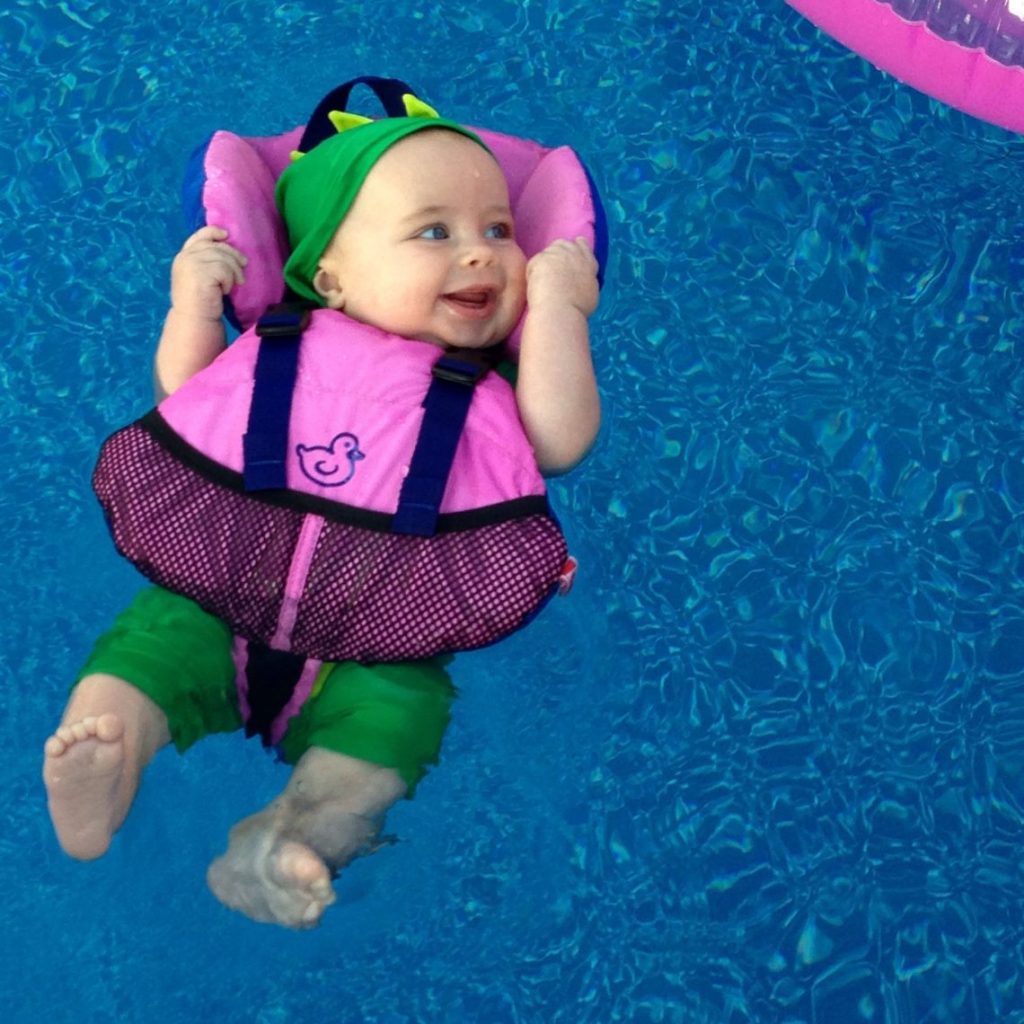
How to Use Infant Life Jackets
Infant life jackets, also known as personal flotation devices (PFDs), are specifically designed to ensure the safety and comfort of infants in water. To use an infant life jacket effectively, follow these guidelines:
First, ensure the PFD is intended for infants and carries the US Coast Guard approval. This can be verified by checking the life jacket for size limits and weight restrictions, which are stated on the label. Infant PFDs are generally suitable for babies weighing between 8 to 30 pounds.
When selecting an infant PFD, it's crucial to find the proper fit. It should have a padded head support to help keep the child's head above water, and a grab handle that enables adults to easily retrieve the child from the water. Moreover, the PFD should have adjustable straps and buckles that are fully functional, allowing for a snug fit around the infant's body.
Before placing an infant in their life jacket, check for any signs of wear and tear, such as loose straps or torn fabric. If the PFD exhibits any of these issues, discard it and obtain a new, undamaged product. When putting the life jacket on your baby, fasten all straps and buckles securely, ensuring it fits snugly around their body without causing discomfort or restricting their movements.
It is essential to frequently inspect the infant's PFD to ensure it remains in good condition and continues to provide optimal safety. Some maintenance steps to follow include washing the PFD with gentle soap and water, air-drying it away from direct sunlight, and storing it in a cool and dry place.
In conclusion, using an infant life jacket properly requires careful selection, fitting, and maintenance. By following these guidelines, parents can feel confident that their child will remain safe and comfortable around water.
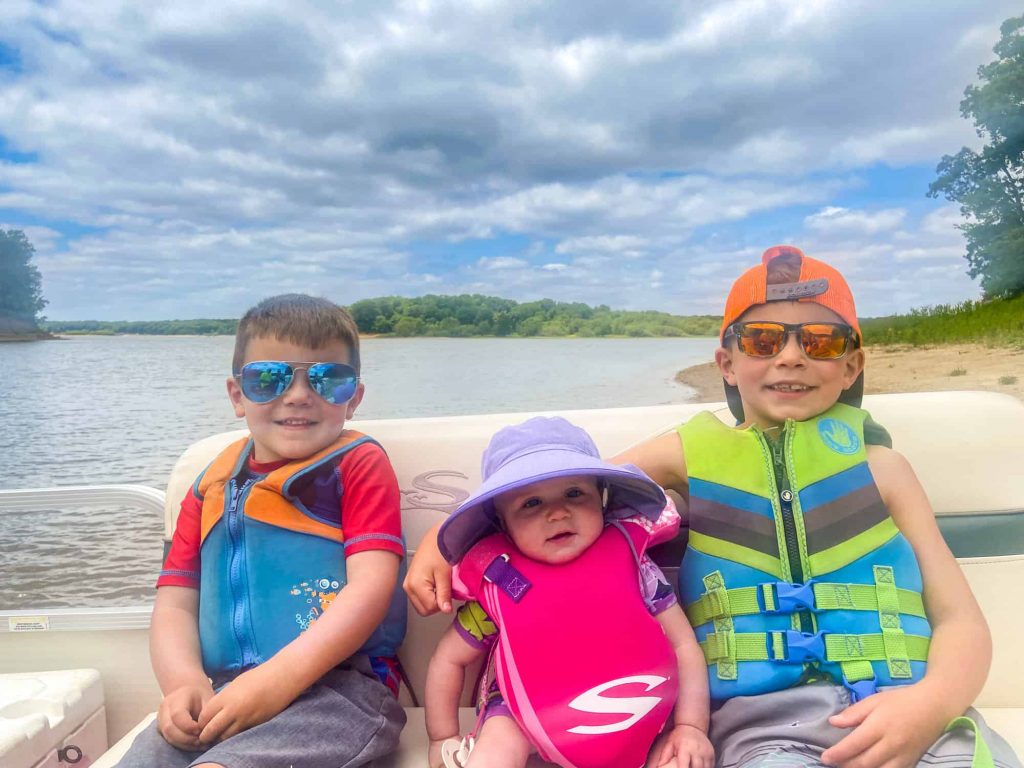
Compliance with Regulations
Infant life jackets are essential safety equipment for young children while on watercraft and are subject to specific regulations by state and federal agencies. The purpose of these regulations is to ensure the safety of children on water and give them a better chance of survival in case of accidents or emergencies. The most common governing bodies include federal laws and the U.S. Coast Guard.
In the United States, federal law mandates that children under 13 years of age wear a properly-fitted, U.S. Coast Guard-approved life jacket at all times on a moving boat. There are a few exceptions, such as when the child is below deck, in an enclosed cabin, or if the boat is not underway 1. This requirement is consistent across all states to avoid ambiguity, confusion, and encourage nationwide compliance.
Each state may have additional laws specific to children's life jacket requirements. These can vary from one state to another, but they still adhere to the minimum standards set by federal law. For example, an all-inclusive website like Life Jacket Advisor provides a comprehensive list of all 50 states and their respective child life jacket requirements. It is essential for boaters and guardians to comply with these laws to avoid fines and penalties, especially when traveling between different states.
The U.S. Coast Guard plays a vital role in enforcing these regulations, as they have the authority to inspect boats and ensure proper safety measures are in place. Moreover, they help in providing guidance and resources, like BoatUS Foundation, towards understanding life jacket requirements and educating the public about the importance of wearing life jackets.
Compliance with life jacket regulations for infants is more than just following the law. It is about ensuring the safety, well-being, and peace of mind for children and their families when participating in water activities.

Popular Infant Life Jacket Brands
When it comes to ensuring the safety of your little one while enjoying water activities, several brands offer reliable infant life jackets. These life jackets cater to the needs of infants by providing security, comfort, and accessibility. Let's explore some of the popular brands and their offerings.
Stohlquist Infant Life Jacket: Stohlquist is known for their high-quality life jackets designed for comfort and protection. The Stohlquist Infant Life Jacket is suitable for infants weighing less than 30 pounds. It features a wrap-around design with adjustable straps, a foam pad for head support, a crotch strap, and a grab handle. This life jacket ensures your little one stays buoyant and comfortable.
Airhead Treasure Life Vest: Airhead is a popular brand in the water sports industry, and their Airhead Classic Infant Life Vest is designed specifically for infants. With its bright colors, secure fit, and lightweight design, this life vest offers excellent flotation and visibility in the water while being comfortable for the baby to wear.
Stearns Infant Classic Series Vest: Stearns is another reputable brand offering the Infant Classic Series Life Vest, which is designed for infants up to 30 pounds. This life jacket has a soft, durable nylon shell and offers a secure fit with an adjustable crotch strap. The rounded flotation collar provides excellent head support, while the grab strap allows for easy retrieval in the water.
Overton's Infant Vest: Overton's is known for its wide range of water sports products, including life jackets for children. Their Infant Vest is suitable for infants weighing up to 30 pounds and features a sturdy nylon shell, adjustable straps, a crotch strap, and a grab handle for added safety. The design ensures proper flotation and support for your little one in the water.
These popular infant life jacket brands prioritize safety and comfort, ensuring that your baby can enjoy water activities with confidence. Make sure to carefully consider the different features each brand offers to determine the best option for your little one.

Tips for Purchasing Online
When shopping for the best infant life jackets online, it's essential to keep some key factors in mind to ensure a smooth and successful purchase. Here are a few tips to guide you in purchasing the perfect life jacket for your little one.
Know the Size and Weight Requirements: Always pay close attention to the size and weight requirements specified by the life jacket manufacturer. Most infant life jackets cater to babies weighing between 8 and 30 pounds. Select the appropriate size based on your child's weight and age.
Look for USCG Approval: Purchase life jackets that are approved by the United States Coast Guard (USCG). This certification ensures that the life jacket meets all necessary safety standards and will provide optimal protection for your infant.
Read Reviews and Ratings: Before adding an infant life jacket to your cart, take the time to read customer reviews and ratings. This can give you valuable insights into the product's quality, effectiveness, and user experience.
Ease of Use: Choose life jackets with easy-to-use buckles and adjustable straps to ensure a comfortable and secure fit. Adjustable straps are particularly important as your baby grows, so the life jacket remains comfortable and functional.
Comfort and Design: Opt for life jackets that feature soft, breathable materials and padded neck support for your infant's comfort. A well-designed life jacket will keep your baby safe while making them feel at ease in the water.
By considering these factors and following these tips, you can confidently purchase the perfect infant life jacket online for your baby's safety and comfort.
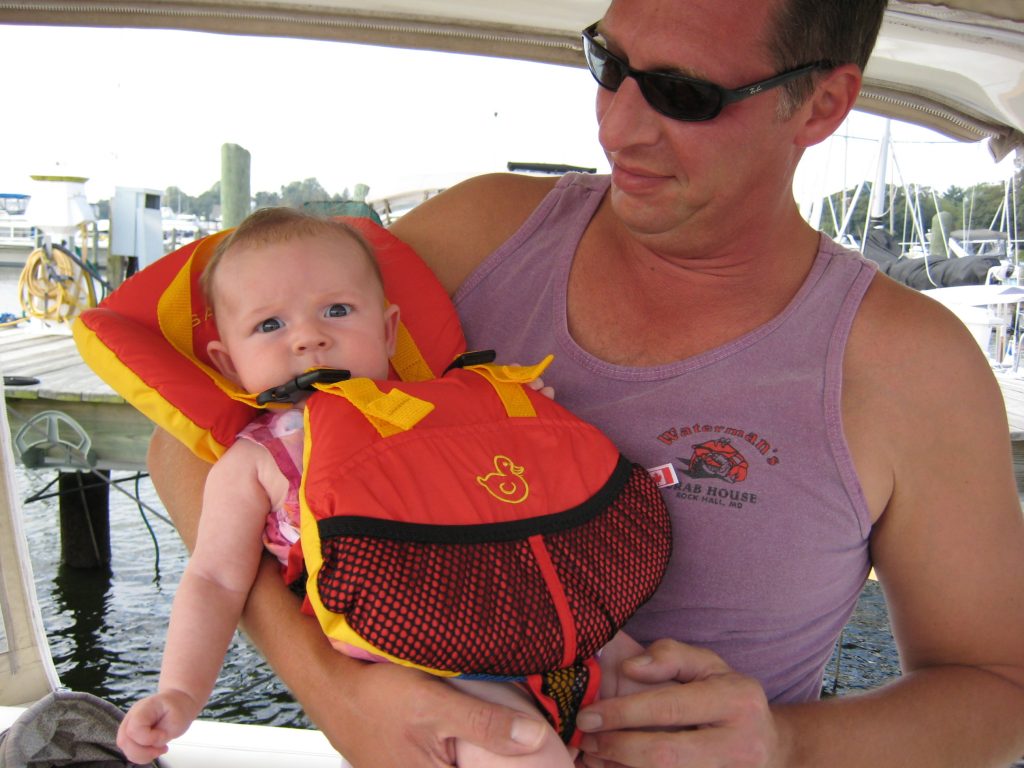
Ensuring Comfort During Use
When choosing an infant life jacket, it is essential to prioritize comfort and safety. An ideal life jacket ensures babies remain comfortable, even on hot days, while providing them adequate freedom of movement. Selecting a life jacket with a well-designed neck collar can further enhance comfort and make the experience more enjoyable for the child.
Bright colors are not only visually appealing, but also serve a practical purpose. A life jacket with vibrant hues helps to increase visibility, making it easier to spot the infant in the water. This added safety feature contributes greatly to the overall effectiveness of the life jacket.
On hot days, it's crucial to select a life jacket made of breathable materials. This will help regulate the infant's body temperature, preventing discomfort or overheating. Opt for life jackets that offer mesh panels or ventilation features to maximize air circulation.
Mobility is another critical factor to consider when selecting an infant life jacket. Ensure that the life jacket allows the child to move their arms and legs freely, without restricting their natural movements. This not only keeps the baby comfortable but also helps them enjoy their time in the water.
A well-designed neck collar provides essential head support for the infant. The collar should be soft and appropriately sized to avoid causing discomfort around the neck. In addition, the collar should keep the baby's head above water and face up, while offering stability as they float.
By keeping these factors in mind, parents can be confident that they are choosing a comfortable and safe life jacket for their little ones, ensuring a pleasant water experience for the entire family.
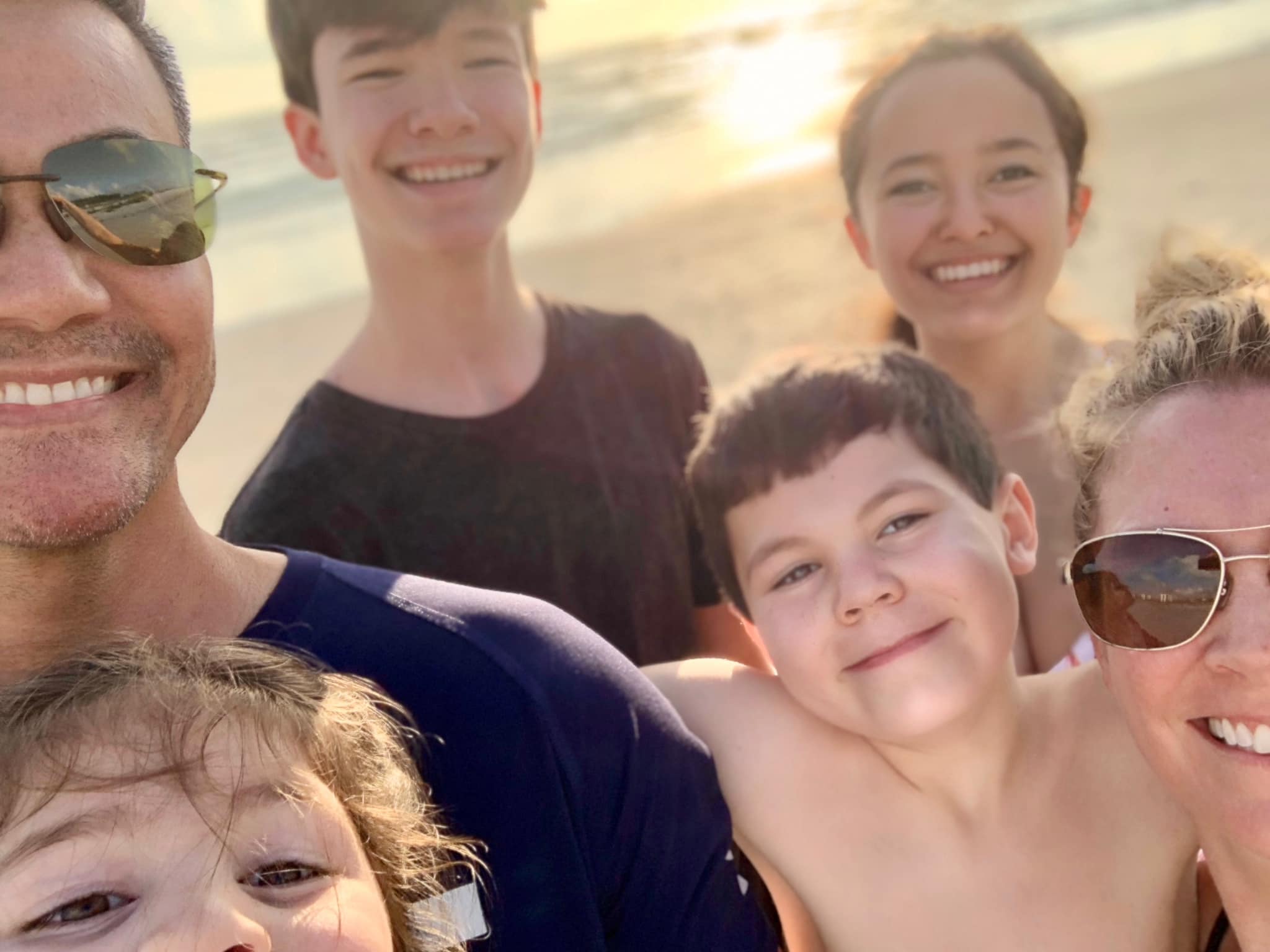
Teaching Water Activities to Your Child
Introducing your child to water activities can be both exciting and daunting. As a parent, it is essential to ensure your child's safety while helping them explore and enjoy the water. Here are a few steps to take while teaching your kids about various water activities.
First and foremost, equip your child with a proper fitting life jacket whenever they are around or engaged in water activities. A U.S. Coast Guard-approved life jacket should be the perfect choice based on your child's weight and water activity. For younger children or infants, opt for a life jacket that has a collar for head support and a strap between the legs.
Start by familiarizing your child with water through activities like supervised bath time, where they can eventually learn basic swimming skills. It's essential that they become comfortable with water, especially if they are not used to it. This simple act of exposure can help ease any anxieties they may have and develop an interest in water activities.
Always have at least one adult supervising when children are near water. For younger children and weak swimmers, keep them within arm's reach. More experienced swimmers should have a partner to maintain safety while engaging in water activities. Safe Kids Worldwide recommends appointing a "Water Watcher," an adult designated to keep an eye on the kids at all times.
Introduce your child to swimming lessons when they reach an appropriate age. Ideally, enroll them in a program with a qualified instructor who can patiently and effectively teach them essential water safety and swimming skills. Learning to swim is not only a valuable survival skill but also encourages participation in various water activities like boating, sailing, kayaking, and canoeing.
Lastly, remember to lead by example. Children tend to learn faster when they observe their parents participating in the activities themselves. Show them proper safety measures, such as wearing life jackets or floatation devices, and demonstrate respect for the water and its potential risks.
By equipping your child with essential water safety knowledge and skills, you can confidently introduce them to the joys of water activities while minimizing the risks involved.
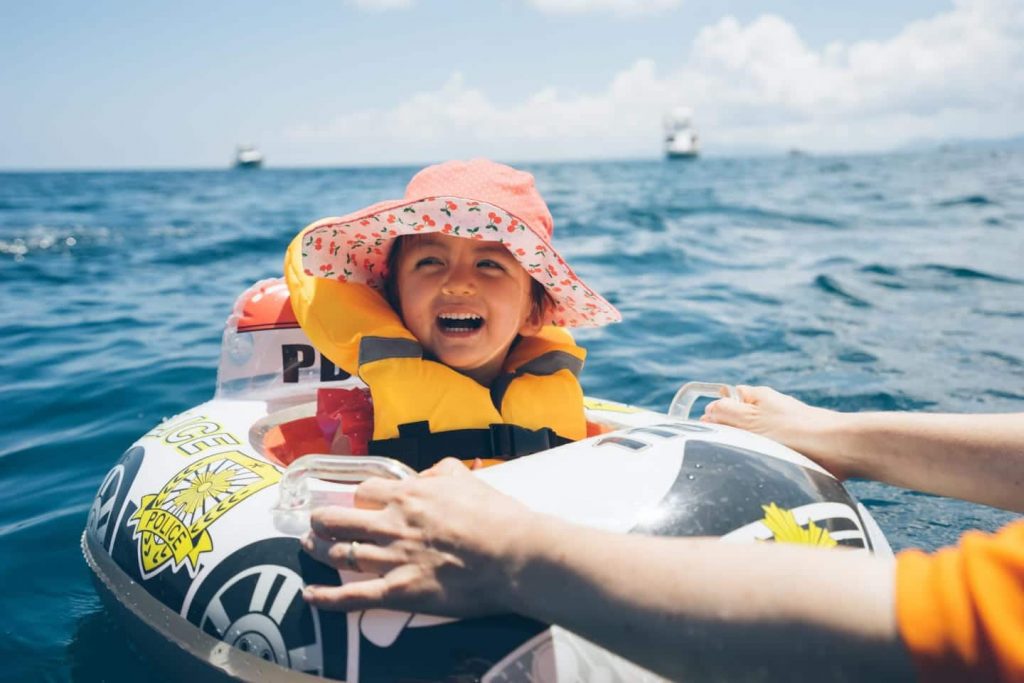
Additional Safety Gear for Infants
When it comes to boating safety, a life jacket is essential for infants. However, there are other safety gear items that can be used to enhance your child's protection and comfort during water activities. It is important to be confident, knowledgeable, and clear about what additional safety gear is recommended.
In addition to an infant life jacket, a sun hat can provide protection from the sun's harmful rays, offering shade for your little one's face and neck. This is especially important for babies and toddlers with sensitive skin, as sunburns can occur quickly while out on the water.
Sunscreen is another essential safety gear item to keep your infant's skin protected while boating. It is important to choose a sunscreen with an SPF of at least 30 and reapply it every two hours, or as needed, based on your child's activity level and sun exposure.
To help keep your child comfortable and prevent any accidents on slippery surfaces, consider investing in water shoes. These shoes are designed to provide traction on wet surfaces and protect your infant's feet from sharp objects.
Ensuring that your baby has proper swimwear can also improve their safety and comfort in the water. Look for swimwear that is made of quick-drying material and provides appropriate coverage for your child's age and size.
It is crucial to remember the importance of constant adult supervision when your infant is near or in the water. While safety gear can assist in keeping your child safe, it is no substitute for your watchful eye and quick response if needed.
Lastly, consider having a safety whistle on hand in case of an emergency. This can be an effective way to signal for help in the event of an accident or if you need assistance with your child while on the water.
By equipping your infant with the proper life jacket, and considering these additional safety gear items, you can ensure a safer and more enjoyable boating experience for your family.

Frequently Asked Questions
What type of life jacket should an infant wear?
An infant should wear a life jacket specifically designed and appropriately sized for their age and weight. The life jacket should be approved by an organization like the U.S. Coast Guard, and it should have a head support, a crotch strap, and a handle to allow for easy lifting of the child in water.
What is the smallest life jacket for an infant?
The smallest life jackets available are designed for infants weighing between 8 to 30 pounds. One recommended option is the Salus Bijoux Baby Vest, suitable for babies weighing 9 to 25 pounds.
Are neoprene infant life jackets more comfortable?
Neoprene life jackets can be more comfortable than traditional nylon life jackets because they are softer and can conform better to a child's body, providing a snug fit. However, comfort levels vary depending on the child and the specific life jacket model. It's essential to try a few options and choose the one that fits well and is comfortable for your baby.
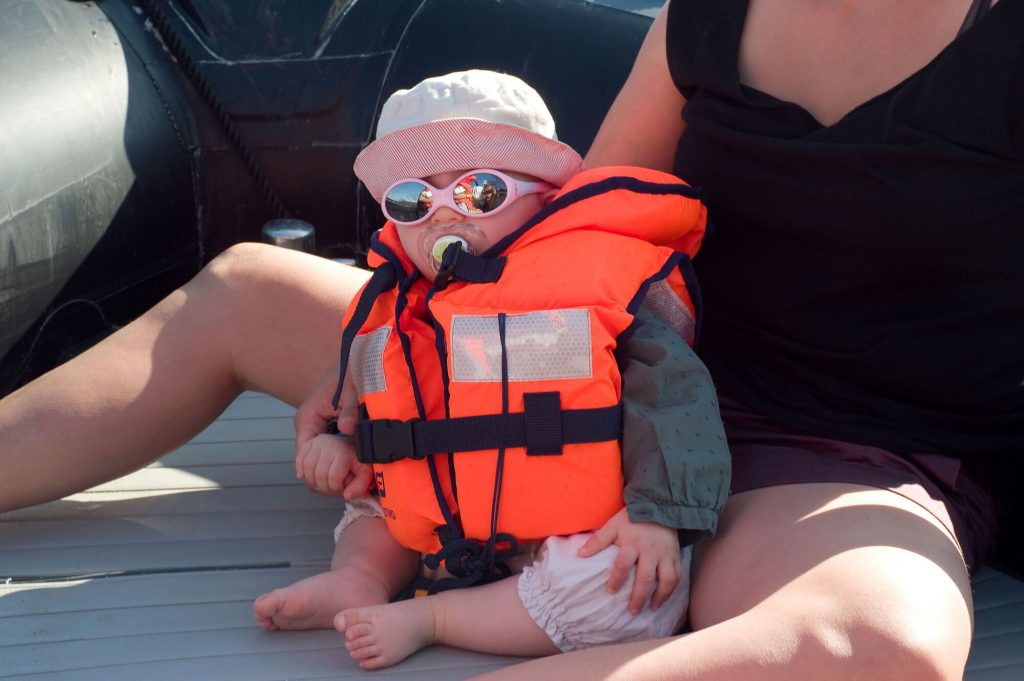
Which brands are recommended for infant life jackets?
Some recommended brands for infant life jackets include Stohlquist, Mustang Survival, O'Neill, and Salus. You can find a list of the best infant life jackets from various brands at BabyCenter.
Are there specific infant life jackets for boating?
While some life jackets are designed explicitly for water activities like boating, any infant life jacket approved by the U.S. Coast Guard should be suitable for boating with a baby. Look for a life jacket with a head support, a crotch strap, and a handle, as mentioned earlier, to ensure safety while boating.
What age can an infant start wearing a life jacket?
Infants should start wearing a life jacket as soon as they start participating in water-related activities, such as boating or swimming. It's crucial to choose a properly sized life jacket for your baby to ensure safety and comfort while in the water. Remember to always supervise your baby closely near water and follow guidelines provided by your pediatrician or a water safety expert.
Footnotes
Charlie is Editor-in-Chief of Sea Magazine

